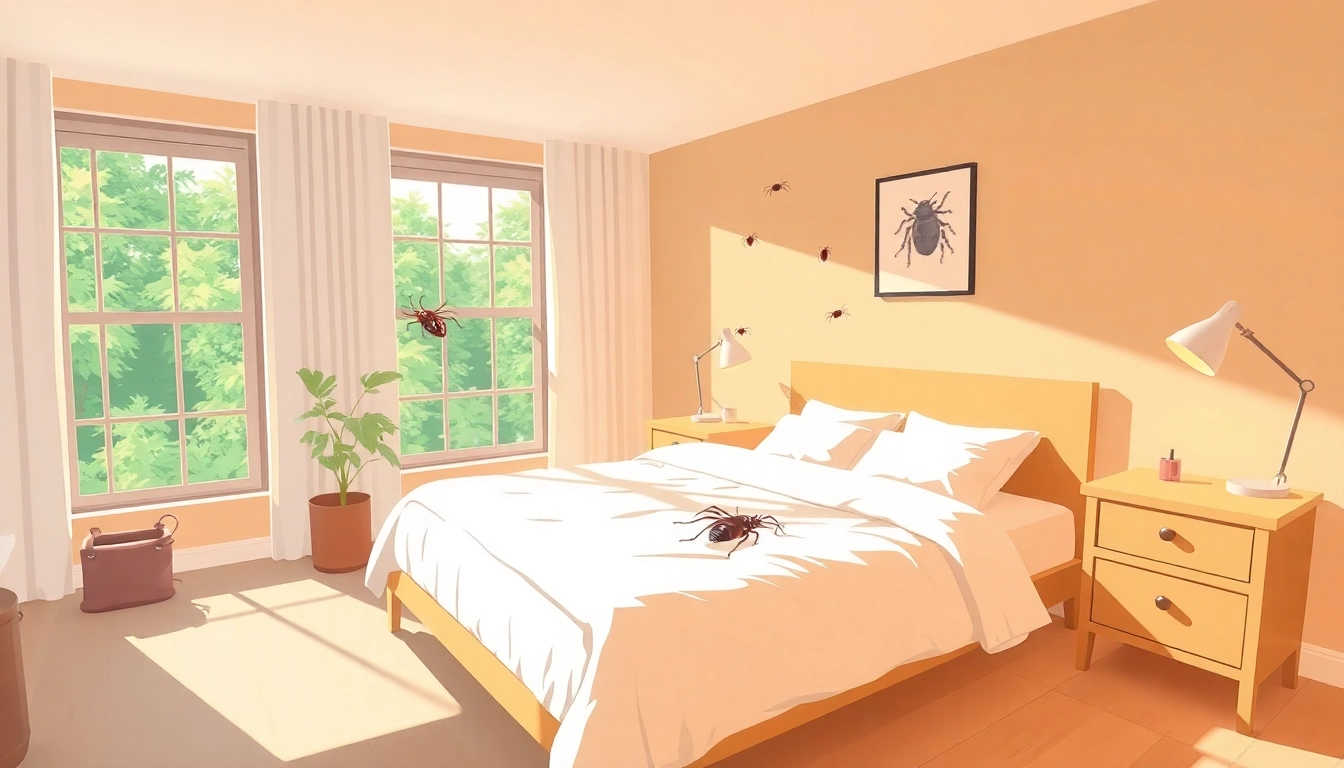
Understanding Bed Bugs
What Are Bed Bugs?
Bed bugs are small, wingless insects belonging to the Cimex genus. They are parasitic pests that primarily feed on the blood of humans and animals. Adult bed bugs are reddish-brown, about the size of a pinhead, and have flat bodies that allow them to hide easily in crevices and cracks. Due to the nocturnal nature of these pests, they typically come out at night to feed while their hosts are asleep. Bed bugs can travel between locations through personal belongings, luggage, or furniture, making them a common concern in hotels, homes, and public spaces.
The Life Cycle of Bed Bugs
The bed bug life cycle consists of multiple stages: egg, nymph, and adult. Female bed bugs can lay up to 5 eggs a day and several hundred in a lifetime, and these eggs are often hidden in places like mattress seams and furniture joints. The eggs hatch in about a week, leading to the nymph stage, which goes through five molts before reaching maturity—taking anywhere from several weeks to months, depending on environmental conditions such as temperature and availability of food. Understanding this life cycle is crucial for effective bed bug control, as it helps in targeting each stage during treatment.
Common Signs of Infestation
The presence of bed bugs can be detected through several indicators:
- Bite Marks: Red, itchy welts on the skin are common signs that indicate bed bugs have fed.
- Blood Stains: Small reddish spots on sheets or mattresses are often from crushed bed bugs or blood left after feeding.
- Signs of Molts: Bed bugs shed their exoskeletons as they progress to maturity, leaving behind nymph skins scattered in hiding spots.
- Dark Spots: Fecal spots, which are dark and small, are another sign of bed bug presence, usually found in places where they hide.
Effective Control Methods
Chemical vs Non-Chemical Control
Control methods for bed bugs can be broadly classified into chemical and non-chemical options. Chemical controls typically involve the use of insecticides that target adult bed bugs and their eggs. However, with growing resistance to certain chemicals, relying solely on these methods may not yield satisfactory results. Non-chemical controls, such as heat treatments and vacuuming, play a crucial role in an integrated approach to bed bug management.
Using Integrated Pest Management (IPM)
Integrated Pest Management (IPM) is a sustainable approach to pest control that combines preventive measures with chemical treatments to manage bed bugs. This approach includes:
- Regular Inspections: Conducting periodic checks of sleeping areas, furniture, and personal belongings for signs of bed bugs.
- Proper Sanitation: Reducing clutter and ensuring clean living spaces decreases the likelihood of bed bug hiding spots.
- Physical Removal: Utilizing vacuuming, steaming, and washing infested items to reduce bed bug populations.
- Targeted Chemical Use: Applying pesticides only in areas where bed bugs are found, following labeled instructions to ensure safety and efficacy.
- Monitoring: Utilizing bed bug traps and monitors to track infestation levels over time.
Best Practices for Bed Bug Control
Implementing best practices is essential for effective bed bug control:
- Isolate Infested Items: Seal any infested clothing or bedding in plastic bags until treated to prevent spreading.
- Heat Treatment: Exposing items to high temperatures (at least 120°F) can effectively kill all life stages of bed bugs.
- Regular Laundering: Laundering bedding and clothing regularly at high temperatures can minimize risks.
- Regular Vacuuming: Vacuum carpets and furniture frequently, emptying the vacuum bag immediately outside the home.
DIY Bed Bug Control Techniques
Home Remedies That Work
While many home remedies exist for bed bug control, their efficacy varies. Some methods include:
- Essential Oils: While oils like neem or tea tree are touted as repellents, they are not guaranteed exterminators.
- Alcohol: Isopropyl alcohol can kill bed bugs on contact but is not effective for long-term control.
- Diatomaceous Earth: This natural powder can be a beneficial non-chemical option, as it dehydrates and kills bed bugs when they crawl over it.
Steps to Prepare for Treatment
Effective treatment begins with proper preparation. Steps include:
- Declutter Rooms: Reduce clutter where bed bugs can hide.
- Store Belongings: Seal belongings in plastic containers and bags.
- Identify Hotspots: Locate and target areas where bed bugs are most likely to hide, such as beds, couches, and baseboards.
Long-term Prevention Strategies
To deter future infestations, consider these long-term strategies:
- Use Protective Covers: Mattress and box spring encasements can help keep bed bugs out.
- Minimize Transport: Be cautious about bringing items from unknown sources into your home.
- Frequent Inspections: Conduct regular inspections, especially after traveling.
Choosing Professional Extermination Services
When to Call a Professional
While some individuals may opt for DIY solutions, calling a professional is advised when:
- The infestation is severe or widespread.
- Self-treatment methods have not resolved the issue.
- Time constraints make it difficult to implement effective strategies.
What to Expect from a Bed Bug Exterminator
Hiring a professional exterminator typically includes:
- A thorough inspection to identify infestation levels.
- Customized treatment plans that might involve the use of heat, pesticides, or both.
- Advice on how to prepare your home for treatment and maintain bed bug prevention afterward.
Questions to Ask Potential Exterminators
Before hiring a pest control expert, ask the following questions:
- What methods do you use to treat bed bugs, and are they safe for children and pets?
- How long will the treatment last, and what guarantees do you provide?
- Do you provide follow-up inspections to ensure the problem is resolved?
Staying Bed Bug-Free
Monitoring for Re-Infestation
Post-treatment, ongoing monitoring is crucial for ensuring bed bugs do not return. Consider:
- Installing traps or monitors in sleeping areas.
- Conducting regular checks for signs of bed bug activity.
Regular Cleaning and Maintenance Tips
Incorporating regular cleaning into your routine can significantly reduce the chance of re-infestation:
- Vacuum carpets and furniture routinely.
- Launder bed linens and clothing at least once a week.
- Keep storage areas organized and clutter-free to eliminate hiding spots.
Community Resources for Ongoing Support
Seek out local resources and community programs that provide information and support for bed bug management. Many municipalities offer educational workshops and resources on pest control, which can be valuable for residents looking to stay informed and proactive against infestations.






